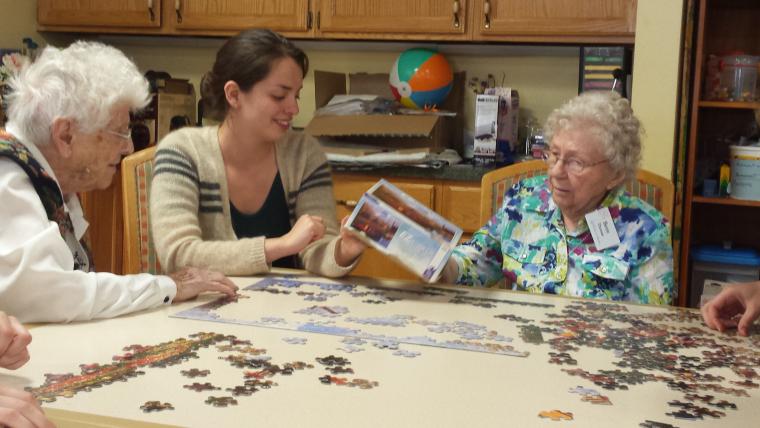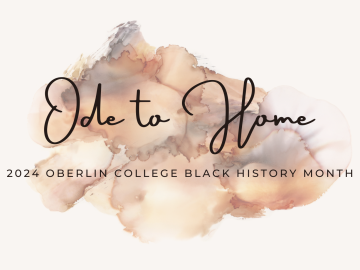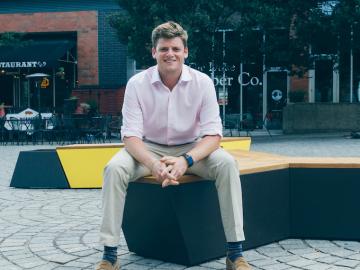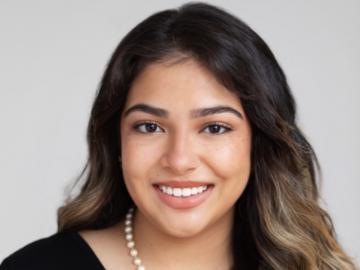Bridging Generations in Oberlin
May 2, 2014
Phoebe Hammer

Just a few blocks from Oberlin’s campus, another dynamic and diverse community is thriving. Kendal at Oberlin, a retirement community that opened in 1993, has more than 300 residents from 32 states. Every year, Oberlin students get involved in the community, creating a strong relationship between the college and Kendal. From volunteer experiences, to paid work, to class projects, more and more students are becoming active members of the Kendal family.
For sophomore neuroscience major Emilia Varrone, working personally with elderly residents was the driving force in her decision to volunteer at the center on Sundays, where she spends most of her time one-on-one talking to residents who do not have family or visitors. “The amount of time you spend with older people and get to know their problems is very limited, especially in college; that makes this opportunity pretty special,” she says. “I’ve gotten some profound life advice.”
First-year Benjamin Biffis was eager to volunteer with the elderly. He has been working closely with residents in technology support, specifically with Lumosity, a computer program aimed at enhancing brain function, including memory, attention, and reflexes. He has described the experience as surprisingly eye-opening. “You assume that everyone knows the basics, but sometimes when I say ‘the Internet,’ the residents don’t know what that is; you need to learn how to explain things in a new way,” he says.
Fourth-year French and comparative literature major Ava Keating, who began working with Kendal residents last October, has taken her involvement to a new level. She started as a volunteer with a nurse practitioner to get shadowing experience, but changed her academic trajectory and began to pursue the creative arts avenues at Kendal. She now works at Kendal 18 hours a week in the department of creative arts therapy, where she teaches several group sessions. These include sculpture, studio art, watercolor, political discussions, “news currents” discussions, and a brain health course.
“Creative arts therapy is, most importantly, a communal activity. These classes are both mentally and physically challenging,” Keating says. “For example, we’ve been working with clay recently to help with dexterity issues. It’s amazing to see how beneficial it’s been.”
Kendal residents often take on mentorship roles with Oberlin students working there. “The culture and relationships between Kendal and Oberlin College is fertile ground for life -changing experiences, be it the students, staff, or residents' life that are altered in a positive way,” said Director of Creative Arts Therapy and Dementia Specialist Michele Tarsitano-Amato. “Not only do our students gain life stories, but they also learn how to deal with landmark life events and find that someone besides your family has taken an interest in you.”
Keating and Tarsitano-Amato were asked to attend the Aging in America conference, hosted by the American Association on Aging, to speak more about the close-knit relationship between the College and Kendal this winter. Here, Keating gave a presentation on the impact that working in the creative arts department has had on her and the residents.
“This is some of the most meaningful work that I’ve ever done. It’s important for young people to engage cross-generationally. There’s just so much to learn,” Keating said. “I’d really like to make an impact in stopping the alienation that so many elderly in our country feel.”
Keating will continue to work with Kendal next semester, and she hopes to pursue a career working with the elderly after graduation.
Tags:
You may also like…
Oberlin College & Conservatory Celebrates Black History Month
March 12, 2024
Throughout February 2024 (and a little into March), Oberlin commemorated Black History Month around the theme Ode to Home.
Change Agent
September 19, 2023
Jesse Kohler’s Oberlin studies led him to become a distinguished voice for trauma-informed advocacy.
Taking Passion to the Pavement
May 5, 2023
Dedication to reproductive rights fuels the service of Bonner Leader Ari Leandry.


